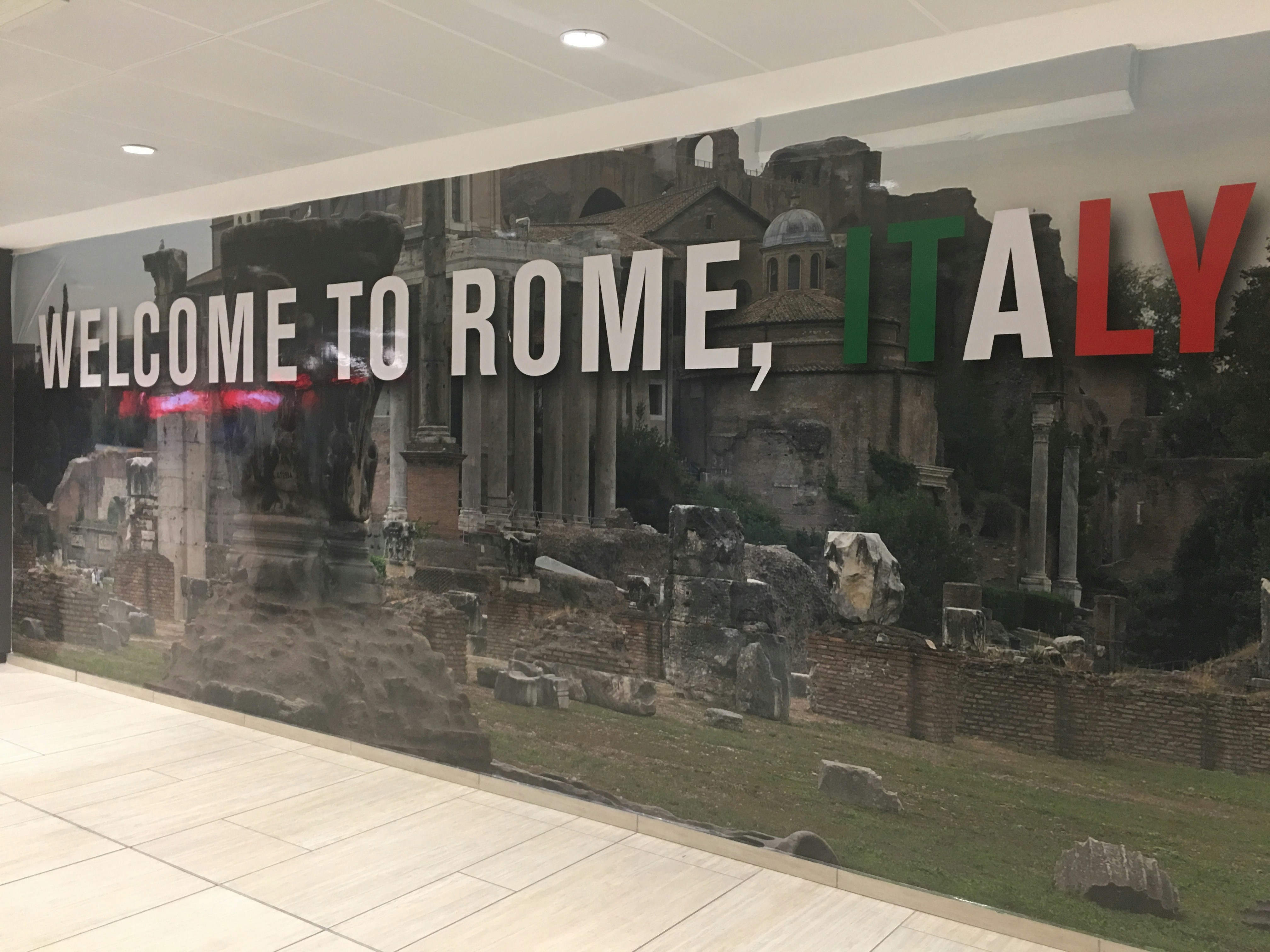10 Smart Tips to Save Money When Visiting Rome, you can feel expensive at first glance — famous monuments, cafés, and guided tours add up fast — but with a little planning you can soak up its history, food, and atmosphere without blowing your budget. Below are ten concrete, reader-tested ways to save money in Rome, plus realistic examples, timings, and links so you can act immediately.
Why Rome doesn’t have to be expensive
Rome’s headline attractions are world-class, but many everyday ways to save are right under your nose: smart use of public transport, choosing the right city pass, eating like a local, timing visits to free-entry days, and booking transport and accommodation at the best moment. A little local knowledge turns “expensive trip” into “great-value trip.” Below you’ll find practical tactics and examples you can use from day one.
Tip 1 — Choose the right city card for your itinerary
If you plan to visit many museums and want unlimited local transport, a city card can save money — but only if it matches your plan. The official Roma Pass bundles free or reduced museum entry and transport for 48–72 hours; it’s excellent for people who plan multiple paid visits in a short span. Compare what you’ll actually enter (for example, two major paid museums plus a few smaller sites) before buying. For many visitors the Roma Pass turns out cheaper than buying single-entry tickets and individual bus/tram fares. (Turismo Roma, rome.net)
How to decide: list the paid attractions you must see, add single-ticket prices, then compare to the pass price. If the pass covers priority entry for your top picks and includes transport, it’s often worth it.
Tip 2 — Book popular tickets and transportation in advance (but be strategic)
Big-ticket sites (Vatican Museums, Colosseum) often sell out or have long lines; prepaid timed-entry tickets save waiting time and reduce temptation to pay for expensive “skip-the-line” add-ons at the gate. The Vatican Museums shows official online ticket fees and the benefits of booking in advance. Likewise, the Colosseum has official tickets with set entry windows and occasional reduced fares for young EU residents. If you know exact dates, book those museum and monument tickets ahead of time. (museivaticani.va, Parco archeologico del Colosseo)
For intercity train travel, booking early usually yields the best fares — and for shorter regional hops point-to-point tickets can be cheaper than a rail pass. Many travel guides recommend booking weeks to months in advance for high-speed trains. (ricksteves.com, Condé Nast Traveler)
Pro tip: Use the affiliate link below on pages where you compare providers for bookings — it goes to a multi-option booking page (flights, hotels, cars, packages) so readers can check air tickets, car rental or cheap combined options quickly:
(Those anchored phrases will link directly to search results for the relevant product so users can compare prices quickly.)
Tip 3 — Use public transport smartly and understand fares
Rome’s public transport (metro, buses, trams) is the cheapest way to cover distances. The basic short-time ticket (BIT) remains an unbelievably low-cost option for quick hops, while 24/48/72-hour and weekly passes are better if you’ll use mass transit heavily. Note that extended validity ticket prices changed recently — 24/48/72-hour options rose in price, so always check current pricing before committing. If your itinerary centers on the historic core, you can save a lot by walking and reserving public transport for travel to farther neighborhoods. (Atac, Turismo Roma)
Example: If you’ll ride public transit more than 4–6 times in 24 hours, a day-pass or 48-hour ticket often pays for itself.
Tip 4 — Walk, explore neighborhoods, and eat like a local
Some of Rome’s best experiences are free: wandering Trastevere’s alleys, watching street life at Piazza Navona, or visiting dozens of churches filled with art. For food, skip the restaurants that display multilingual menus aimed at tourists; instead, seek trattorie off the main squares, markets and food halls. Termini’s Mercato Centrale and local markets offer nourishing meals at a fraction of sit-down tourist restaurants. A market lunch + espresso is cheaper and often tastier than a tourist plaza meal. (Katie Parla)
Eating tip: Try a pre-theatre early dinner or a late lunch; midday fixed-price menus (“menu del giorno”) can offer big savings.
Tip 5 — Know when things are free (and plan around those days)
Several major sites offer free-entry days or special reduced times. For example, the main archaeological park that includes the Colosseum often runs free-entry promotions on specific national cultural days or on the first Sunday of the month; check official calendars and plan visits accordingly. If a free day aligns with your trip, prioritize the high-ticket attraction then and use paid days for smaller sites. (Parco archeologico del Colosseo)
Warning: Free days draw crowds; arrive early and know that certain areas may be extremely busy.
Tip 6 — Stay in neighborhoods that save on transport and meals
Central areas near Termini or the historic center look convenient but can have higher nightly rates. Consider well-connected neighborhoods that are slightly off the main tourist drag — Monti, San Lorenzo, Pigneto, or Testaccio — where lodging and meals are cheaper and the vibe is more local. With a short metro or tram ride you’ll be in the heart of Rome but paying less for accommodation and eating options.
Savings math: Cheaper nightly rates plus local grocery/market meals can cut lodging + food costs by 20–40% compared to touristy squares.
Tip 7 — Save on coffee and gelato like a Roman
Ordering coffee at the bar (standing at the espresso counter) is significantly cheaper than table service. Gelato tastes best and costs less when bought away from major piazzas — look for shops that display ingredients and avoid neon signs declaring “tourist gelato.” Small habits like using public water fountains (nasoni) for refills also cut costs.
Tip 8 — Combine attractions and look for bundled deals
Some museums and sites participate in bundled ticket offers or combined tours that work out cheaper than buying each entry separately. For cultural travelers who want fast-track access, weigh the time saved against the cost — sometimes a skip-the-line option frees a half-day for a cheaper self-guided tour or neighborhood exploration. Also check for student, youth, EU-resident, and senior discounts before buying — ID often yields lower prices.
Example: A combined archaeological ticket that includes the Colosseum, Roman Forum and Palatine Hill is commonly cheaper than separate entries for each, and it keeps your schedule simple. (Parco archeologico del Colosseo)
Tip 9 — Use low-cost local options for small-group experiences
Private tours and small-group experiences in English may seem expensive compared to self-guided visits — but smaller group walking tours that focus on neighborhoods or food can be surprisingly affordable and provide contextual tips that save you money later (where to eat, what to skip, how to use transport). Look for highly-rated local guides who run 2–3 hour tours; many offer affordable rates and a much deeper experience than big tourist buses.
Tip 10 — Be smart with airport transfers, car rental and extras
Airport taxis and private transfers are convenient but costly. Compare trains and shuttle buses to the city center for the best value. When you need a car for day trips outside Rome, compare multiple suppliers and look for economy vehicles (and basic insurance) — reserve early to get the best rates.
If you’re comparing flights, cars, and package options quickly, you can use the same multi-provider search to check many options at once:
(These anchor links take your reader to a results page showing multiple providers so they can choose the best economical option.)
Budget example: 3-day Rome sample costs (illustrative)
Below is a realistic, example daily budget for a moderate-saver traveler (prices rounded, approximate). Your real costs will depend on season and choices.
- Accommodation: €60–€120 per night (budget to mid-range guesthouse outside main piazzas)
- Food: €15–€30 per day (market lunch, espresso, trattoria dinner)
- Transport: €1.50–€8.50 per day (single rides or day-pass depending on recent fares) — check current fares before travel. (Atac, Turismo Roma)
- Attractions: €10–€25 per major museum with advance ticketing; consider Roma Pass if visiting several paid sites. (Turismo Roma)
Total daily mid-saver: roughly €100–€180 per day (excluding flights). With careful choices you can push this lower.
Safety, tipping, and hidden costs to watch for
- Service charges: Many restaurants add a “coperto” (cover charge) and sometimes a service fee — check menus and the bill before paying.
- Tipping: Tipping isn’t mandatory in Italy; rounding up or leaving a few euros for great service is fine.
- Ticket validation: Some train and bus tickets must be validated in machines or risk a fine. Always confirm with local staff or posted signage. (Condé Nast Traveler)
The best free & low-cost things to do in Rome
- Walk the historic center (Pantheon, Trevi Fountain area) — free (except occasional small access fees for special sites).
- Visit churches (many are free; some special chapels or galleries may ask for a small fee).
- Stroll Villa Borghese gardens (free to enter; gallery has a fee).
- Explore lively markets (Campo de’ Fiori in the morning, Mercato Centrale near Termini for cheap eats). (Katie Parla, The Guardian)
Save more: quick checklist before you go
- Price-check flights and hotels early and often. Compare options here.
- Prebook big museums and note free-entry calendar days. (museivaticani.va, Parco archeologico del Colosseo)
- Buy local transport tickets smartly (single vs day pass). (Atac)
- Eat where locals eat and use markets for affordable meals. (Katie Parla)
- Walk — Rome rewards good walking shoes.
FAQs — Practical answers your readers will search for
Q: Is Rome expensive to visit?
A: Rome’s cost depends on choices: luxury hotels, tourist-trap restaurants, and private transfers add cost quickly. With local dining, public transport, and selective paid visits you can visit Rome on a moderate budget. Look at city cards only after listing the sites you’ll definitely visit to make sure the pass saves you money. (Turismo Roma)
Q: Should I buy the Roma Pass or an Omnia/combined Vatican pass?
A: It depends. Roma Pass includes transport and access to museums; Omnia/other Vatican combo cards may prioritize Vatican access and skip-the-line at some sites. Compare the attractions you plan to visit — if you plan multiple museum entries plus transport, Roma Pass is often the better value. (Turismo Roma, visit-borghese-gallery.com)
Q: How do I avoid long lines at the Colosseum and Vatican?
A: Prebook timed-entry tickets online. Arrive well before your time slot, and consider visiting during shoulder-season months (spring/early autumn) or very early in the morning. Free-entry days bring large crowds, so if you want a quieter experience avoid those. (museivaticani.va, Parco archeologico del Colosseo)
Q: Are day passes for public transport worth it?
A: If you’ll take more than 4–6 rides in 24 hours, a day pass or 48/72-hour pass is usually cost-effective. Recent fare updates increased the price of multi-day cards, so check current rates and compare with the number of trips you expect. (Turismo Roma, Atac)
Q: What’s the best way to find cheap meals?
A: Eat where locals do — neighborhoods away from the big squares, street food markets (Mercato Centrale), bakeries, and small trattorie. Avoid restaurants with multilingual menus posted outside — those often target tourists at higher prices. (Katie Parla)
Q: When should I book flights and trains?
A: For best flight prices, monitor and book when fares dip (research suggests booking a few months in advance for many routes). For Italian train travel, the earlier you book high-speed trains, the better the price — low fares sell out first. For regional trains, point-to-point tickets bought reasonably in advance are usually inexpensive. (ricksteves.com, Condé Nast Traveler)
Q: Where can I find combined itineraries or package deals?
A: If you want to compare flights, hotels, car rentals, or bundled packages quickly, use a multi-provider search page that shows combined options so you can compare price vs convenience. Check multiple options here.
Final checklist before you hit “book”
- Compare single tickets vs city passes for your exact list of attractions. (Turismo Roma)
- Book Vatican and Colosseum tickets early if your travel dates are fixed. (museivaticani.va, Parco archeologico del Colosseo)
- Choose accommodation slightly outside the main tourist squares to save on nightly rates.
- Pack comfortable walking shoes; walking saves money and reveals hidden gems.
- Refill water bottles at Rome’s free drinking fountains (nasoni) to cut drink costs.
Disclaimer
This article is for informational purposes only. Prices, opening hours, passes and transport fares change frequently; always check official websites and confirm current rates and conditions before booking. I have included helpful official sources where appropriate, but you should verify details for the dates of your trip. Links in the article include an affiliate link that earns a commission if used to book services; this does not affect the price you pay.
Sources used for facts and current ticket/transport guidance
- Vatican Museums — official ticketing & opening details. (museivaticani.va)
- Colosseum (Parco archeologico del Colosseo) — opening hours, ticket info, free-day notes. (Parco archeologico del Colosseo)
- ATAC (Rome public transport) — ticket types and fares. (Atac)
- News on recent public transport fare changes in Rome. (Turismo Roma)
- Roma Pass overview and benefits (official tourism pages and guides). (Turismo Roma, rome.net)
- Local food & market tips (Mercato Centrale and local bloggers). (Katie Parla)
- Train booking & cheap ticket advice (Rick Steves and travel guides). (ricksteves.com, Condé Nast Traveler)




